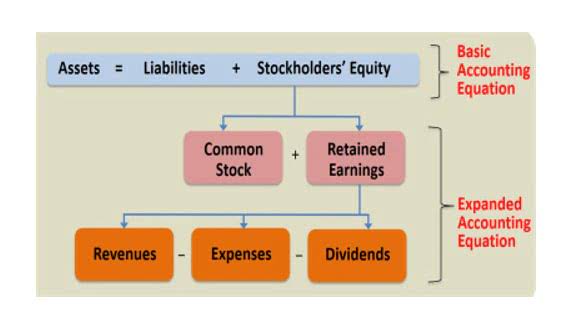
4 Demonstrating DOJ’s effortsto combat pandemic relief fraud, in August 2023, Deputy AttorneyGeneral Lisa Monaco announced the creation of two additionalCOVID-19 fraud enforcement strike forces. «No economic policy can fully end the hardship so long as the public health requires that we put so much of our commerce on ice,» McConnell said in a speech on the Senate floor on Wednesday. «This isn’t even a stimulus package. It is emergency relief. Emergency relief. That’s what this is.»
COVID Public Health Emergency (PHE) Leave Requirement Ended June 8, 2023

5 Forcontextual purposes, SBA approved approximately 11.8 million loans,totaling approximately $800 billion, 6 through 2021(i.e., when most PPP loans originated). SBA has recently signaled,however, that it will scrutinize the remaining 98% of PPP loans ina more sophisticated manner going forward. In May 2021, DOJ deployed the COVID-19 Fraud Enforcement StrikeForce teams, which have since expanded. The Strike Force teams havecharged more than 3,000 defendants with crimes, brought hundreds ofcivil enforcement actions, and recovered more than $1.4 billion inCOVID-19 relief funds.
Housing Programs
Interestingly, there is not much of a systematic relationship between household characteristics and waiting for unemployment benefits. A few indicators (certain levels of liquid assets, being self-employed full time, certain age groups, etc.) significantly predict waiting for unemployment insurance, but generally speaking there is limited evidence of any patterns in experiencing unemployment payment delays. To investigate if there were any patterns in who was left waiting for these relief payments, we used a technique known as linear probability modeling. This approach allows us to CARES Act look at the relationship between household characteristics like race/ethnicity, income, age, and so on, and the probability that a given household was left waiting for unemployment benefits or Economic Impact Payments. Starting in March 2020, the Coronavirus Aid, Relief, and Economic Security Act (CARES Act) provided Economic Impact Payments of up to $1,200 per adult for eligible individuals and $500 per qualifying child under age 17. The payments were reduced for individuals with adjusted gross income (AGI) greater than $75,000 ($150,000 for married couples filing a joint return).
Here’s What Is In The ‘Families First’ Coronavirus Aid Package Trump Approved

In addition, it funded a new Federal Pandemic Unemployment Compensation benefit of $600 per week on top of the regular unemployment benefit that continued through the end of July 2020.

The plan extended the duration of regular unemployment benefits for affected workers from the norm of 26 weeks to as long as 39 weeks. It also extended payment of benefits to the first week of unemployment where not prohibited by state laws. The act authorized direct payments to families of $1,200 per adult plus $500 per child for individuals making up to $75,000, heads of households making up to $112,500, and couples filing jointly making up to $150,000.
- Related work from the Federal Reserve shows that in 2019—when the economy was close to its pre-pandemic peak—roughly 30 percent of U.S. households could either not currently pay their bills or were one financial setback away from not being able to pay their bills.
- Under Title IV of the CARES Act, Treasury OIG is assigned responsibility to audit certifications made by passenger and cargo air carriers and contractors that do not report to the Department of Transportation.
- Ensuring that all Americans, including older Americans and people with disabilities, have access to care – including home-based care – that is safe, reliable, and of high quality is an important part of the President’s agenda and a part of the President’s broader commitment to care.
- Unsurprisingly, they appeared to become tales of the “haves” and “have nots” where better funded, larger child care businesses who had the financial and operational structure to apply and manage programs could access funds and those who didn’t were shut out.
- The principal of the loan could be forgiven up to the total cost of payroll, mortgage interest payments, rent, utility payments, and any additional wages paid to tipped employees made during the eight-week period after origination.
Others may be modified by a fourth legislative initiative to address COVID-19, which is now under discussion. Given that, it is important to keep in mind that additional changes may be forthcoming. For example, if an out-of-work person is receiving the national average of about $340 per week, under the new federal program their take-home pay will be $940. Senate Majority Leader Mitch McConnell, R-Ky., described the legislation, known as the CARES Act, as necessary emergency relief and vowed to put partisanship aside to get it done. The American Rescue Plan Act of 2021 (American Rescue Plan), enacted in early March 2021, provided Economic Impact Payments of up to $1,400 for eligible individuals or $2,800 for married couples filing jointly, plus $1,400 for each qualifying dependent, including adult dependents. It waived the required minimum distribution (RMD) rules for 401(k) plans and individual retirement accounts (IRAs) and the 10% penalty on early 401(k) withdrawals up to $100,000.
Revolving Loan Fund Resources
- To investigate if there were any patterns in who was left waiting for these relief payments, we used a technique known as linear probability modeling.
- The CARES Act was the first piece of coronavirus legislation to place a moratorium on foreclosures and evictions.
- In addition, it funded a new Federal Pandemic Unemployment Compensation benefit of $600 per week on top of the regular unemployment benefit that continued through the end of July 2020.
- The CARES Act was passed by Congress on March 25, 2020 and signed into law on March 27, 2020.The Consolidated Appropriations Act (2021) was passed by Congress on December 21, 2020 and signed into law on December 27, 2020.
- This critical care is provided by a dedicated home care workforce, made up disproportionately by women of color, that often struggles to make ends meet due to low wages and few benefits.
Of over 1000 approved applicants, nearly 3/4 identified as people of color, and about 1/4 were family care businesses, which typically have the greatest access issues. For example, for the first time ever, states will be required to have national appointment wait time standards. States will enforce these wait time standards by conducting “secret shopper” surveys, which can help verify compliance with appointment wait time rules and correct provider directory inaccuracies. States will also now be required for the first time to disclose provider payment rates publicly. Additionally, the rules will create a new beneficiary advisory committee in every state, which will allow for direct feedback to state Medicaid and CHIP programs on benefits and service delivery from the people who access it daily.
Legislative relief for COVID-19 – KPMG Newsroom
Legislative relief for COVID-19.
Posted: Tue, 26 Mar 2024 01:43:23 GMT [source]


















